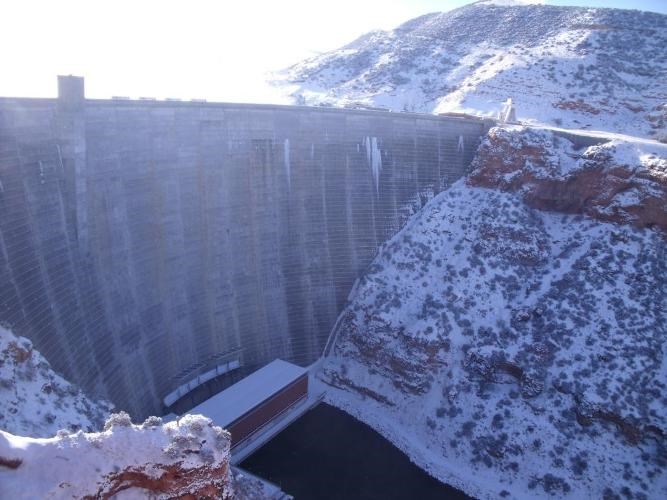
NPS History and Building of the Yellowtail Dam Flood control along the Missouri Basin (of which the Bighorn River is a part, since it flows into the Yellowstone which eventually flows into the Missouri) was brought about by the building of a series of over 50 dams and lakes. Prominent among these is the Fort Peck Dam - in northeastern Montana - the largest public works project in American history and the Yellowtail Dam, at the mouth of Bighorn Canyon. Sixty Years In The Making Since the land was in a semi-arid environment, irrigation would be needed in order to create arable land. In addition, the first decade of the 20th century saw hundreds of settlers move into the area, taking up 160 acre farm allotments under the Homestead Act. The Reclamation Service (precursor to the Bureau of Reclamation) carried out three major studies between 1903 and 1942.
The ground breaking took place in the fall of 1961. A diversion tunnel to reroute the river water during construction was built in the following years. It was approximately 2000 feet long (equivalent to over 6 football fields in length) and 32 feet wide. On March 16, 1963 the first bucket of cement was poured. Several long years of work ensued, in which there were four fatalities, before the dam was completed in 1967. On October 31, 1968 the dam was dedicated. Opposition The dam was built for the following purposes (priorities listed in order of importance), which have all been successfully met:
As a result of the Dam, it has been estimated that flood damage was reduced by $113 million between the years of 1965 and 2007. In regards to electrical generation, the Yellowtail Dam is capable of producing up to 250,000 kilowatts of electricity. The Greatest Impact Amazingly, it is now the most fished stream in the state of Montana. The dam also led to the designation of Bighorn Canyon National Recreation Area in 1968. Each year over 200,000 visitors come to enjoy boating, fishing, along with a wide range of outdoor activities. |
Last updated: February 24, 2015
